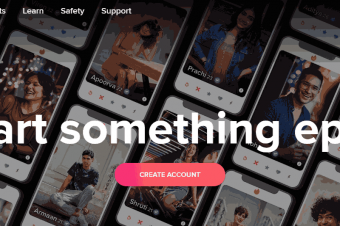Developing Requirements
Tags: Business Analysis
Master the methods involved in planning and gathering requirements and framing input into requirements documents.
Last updated 2022-01-10 | 4.5
- Develop a plan for gathering requirements effectively- Interview stakeholders to understand their pain points and needs
- Observe colleagues and customers to understand how they really do their work
What you'll learn
* Requirements
* This is an intermediate-level course. The material in this course is dependent on the student having taken "Fundamentals of Business Analysis" (search for it on Udemy) or an equivalent courseDescription
Developing Requirements aims to help you advance your business analysis career by giving you the skills needed to elicit the best requirements.
Get to the Next Step as a Business Analyst by Mastering Requirements Elicitation
- Learn how to start your project on the right foot by planning an effective analysis phase
- Learn how to uncover requirements that stakeholders don't volunteer (or might not even be aware of)
- Learn how to effectively interview and observe your stakeholders
- Learn the basics of Joint Requirements Planning (JRP) sessions to accelerate the pace of requirements development
- Learn how to develop requirements that accurately match the needs of your organization, so you can find the best solutions
Business analysis is easy, right? You just ask your stakeholders what they want and write down their responses... No! Experienced Business Analysts know that real requirements development is a challenging endeavor, requiring a number of interviewing, observation, group facilitation, and documentation skills.
In this course, we'll step through how to plan effective requirements development phases for your project, cover the skills you need to run them effectively, and set you up for success in developing solutions to your organization's problems.
In this course, we'll cover:
How to plan your project's analysis phase. Determine where your requirements input should come from. Learn how best to gather requirements from those sources. Choose the best form of plan for your project.
How to gather requirements. Learn how to interview and observe stakeholders. Run effective brainstorming and group interview sessions. Learn the basics of JRP Session facilitation. Run surveys and focus groups. Gather requirements from documents and systems.
How to document requirements. Learn how to organize and categorize your notes into tangible requirements input. Streamline it to avoid duplication and bad requirements. Frame it all into a coherent document.
Throughout the course, you'll also see how the course material works in the real world through a series of scenarios.
Who this course is for:
- Novice to intermediate Business Analysts who want to improve their "soft" skills
- Developers and quality professionals seeking to learn the analysis field
- Experienced BAs seeking a refresher on requirements development methods
Course content
6 sections • 26 lectures
Course Introduction Preview 12:41
Intro to the course. A little bit about the course and the instructor.
Identifying Requirement Sources Preview 09:32
This lecture covers where requirements come from: people, documents, and systems.
Stakeholder Classes Preview 07:59
When we have a lot of stakeholders, it's inefficient to handle them all one-on-one. This lecture covers how to classify them effectively.
Determining Requirements Development Methods Preview 05:51
Once we know who our stakeholders are, and how they're classified, it's time to figure out how we're going to elicit requirements from them... which we cover in this lecture.
Making the Plan Preview 05:56
A requirements development plan will help to keep us on track. This lecture covers how to come up with an easy light-weight plan.
Example Plans: Two Scenarios Preview 09:11
In this lecture we go through two scenarios which cover everything in this section.
One-on-One Interviewing Preview 18:22
One-on-one interviewing is the most common requirement-gathering method -- and one you must master. Learn how in this lecture.
One-on-One Interviewing: High-Level Scenario Preview 08:57
Scenario time! See how Doug (our BA) interviews Solomon (our project sponsor).
One-on-One Interviewing: Detailed Scenario Preview 16:47
Scenario time again! This is a more detailed scenario with Doug and Martha (the Product Analyst).
Observation Preview 05:09
Observation is another critical skill in the BA toolbox. Get up to speed on it in this lecture.
Observation: Scenario Preview 12:19
Scenario again! See how Doug observes Martha as she works.
Group Interviewing Preview 14:55
Group interviewing can be a powerful way to save time while gathering requirements from stakeholders. This lecture covers the unique skills you'll need.
Group Interviewing: Scenario Preview 12:54
Yes... another scenario! Here, Doug interviews several Product Managers all at once.
Brainstorming Preview 13:00
Brainstorming is a fun and effective way for gathering lots of input all at once. Here we'll cover how to do it effectively.
JRP and JAD Sessions Preview 20:11
If you want to be a master Business Analyst, you'll need to know how to run JRP and JAD sessions. In this lecture, we cover the dynamics.
Focus Groups Preview 06:50
Focus groups can help you learn about stakeholder attitudes towards products and processes. This lecture covers how to run them most effectively.
Surveys Preview 11:35
Surveys can help you get feedback from dozens or hundreds (or more) of stakeholders in a relatively short timeframe. Learn how to develop and execute surveys in this lecture.
Documents Preview 15:31
Documents contain tons of valuable information that your stakeholders might not even be aware of. Learn how to review them effectively in this lecture.
Systems Preview 16:14
In this lecture, we'll cover systems as requirement gathering tools. Learn about interface analysis, reverse engineering, and prototyping here.
Documenting Requirements Preview 05:41
There's no point gathering requirements if we don't document them. In this lecture, we cover the best approach to doing so.
Organization and Categorizing Input Preview 07:25
Organizing and categorizing your input will help ensure that your final requirements are solid. Learn how in this lecture.
Streamlining Input Preview 03:19
In this lecture, we cover how to streamline all the requirements input you've received from your sources.
Framing the Requirements Preview 12:50
In this lecture, we cover the writing part of documenting the requirements.
Special Situations and Frequent Questions Preview 13:21
In this lecture, we will cover some "interesting" situations that often cause problems for both novice and expert BAs.
Closing Words Preview 01:17
This is where we wrap up the course (and say "thank you").








 This course includes:
This course includes:
















